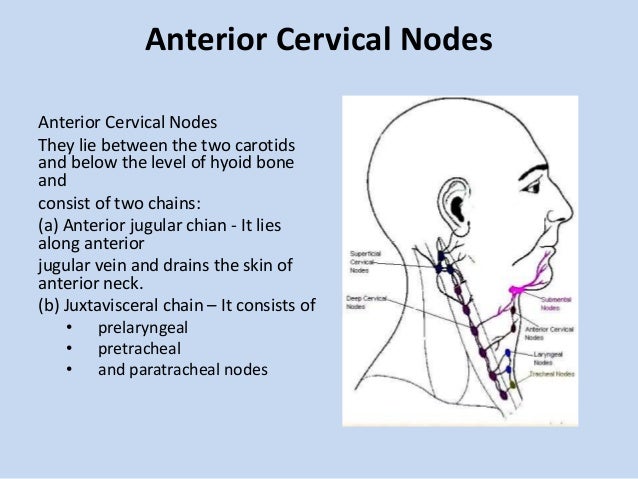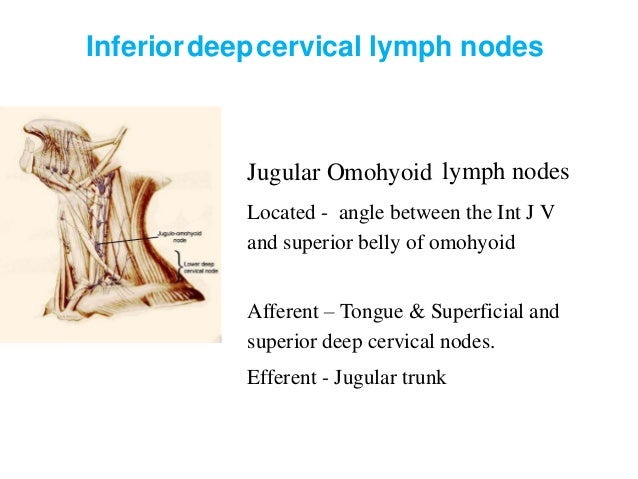

Level III: Middle jugular nodes - around the middle third of the internal jugular vein, from the inferior border of the hyoid to the inferior border of the cricoid cartilage.Level IIb: Postero-lateral to this plane.Level IIa: Anterio-medial to the vertical plane of the accessory nerve.On imaging the anterior/medial boundary is the vertical plane of the posterior surface of the submandibular gland. The anterior/medial boundary is the stylohyoid muscle and the posterior/lateral one is the posterior border of the sternocleidomastoid muscle. The upper boundary is the base of the skull and the lower boundary is the inferior border of the hyoid bone. Level II: Upper jugular nodes (Subdigastric nodes) - around the upper third of the internal jugular vein and adjacent accessory nerve.


Level Ib: Submandibular triangle - within the boundaries of the anterior belly of the digastric muscle, the stylohyoid muscle and the body of the mandible.Level Ia: Submental - within the triangular boundary of the anterior belly digastric muscles and the hyoid bone.Level I: Submental and submandibular nodes.The American Academy of Otolaryngology system (2002) divides the nodes as follows:
SHOTTY ANTERIOR CERVICAL LYMPHADENOPATHY MANUAL
The AJCC system from the 7th edition of the Staging Manual (2009) remains unchanged in the 8th edition of 2018. In addition to the American Academy of Otolaryngology, systems have been devised by the American Joint Committee on Cancer (AJCC). More recently, classification systems have been proposed organized around what can be observed via diagnostic imaging. In 1991, the American Academy of Otolaryngology published a standardised version of this to provide a uniform approach to neck dissection that was updated in 2002, including the addition of sub-levels, e.g. The most commonly used system is one based on a classification of the lymph nodes into numbered groupings, devised at the Memorial Sloan Kettering Cancer Center in the 1930s. However, this system was based upon anatomical landmarks found in dissection, making it imperfectly suited to the needs of clinicians, which led to new terminology for the lymph nodes that could be palpated. The classification of the cervical lymph nodes is generally attributed to Henri Rouvière in his 1932 publication "Anatomie des Lymphatiques de l'Homme" Rouviere described the cervical lymph nodes as a collar which surrounded the upper aerodigestive tract, consisting of submental, facial, submandibular, parotid, mastoid, occipital and retropharyngeal nodes, together with two chains that run in the long axis of the neck, the anterior cervical and postero-lateral cervical groups. There are approximately 300 lymph nodes in the neck, and they can be classified in a number of different ways.


 0 kommentar(er)
0 kommentar(er)
